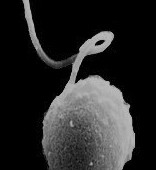Many microbes are unculturablebecause they do not thrive when extracted from their habitats. Studies conducted within the context of a group allows researchers to see the interactions taking place and use the clues provided to identify the individual roles of the microorganisms. Photosynthetic microbial mats fix carbon in the day, but it turns out that…
Tiny Algae Shed Light on Photosynthesis as a Dynamic Property
One of the first chemical reactions children learn is the recipe for photosynthesis, combining carbon dioxide, water and solar energy to produce organic compounds. Many of the world’s most important photosynthetic eukaryotes such as plants did not develop the ability to combine these ingredients themselves. Rather, they got their light-harnessing organelles—chloroplasts—indirectly by stealing them from…
Yellowstone yields novel achaeon and candidate Archaea phylum
When a third branch to the Tree of Life was proposed several decades ago, the evidence used to support the need to recognize the kingdom Archaea came in the form of two divisions of organisms that could not be categorized as Eukaryotes or Bacteria. Since then, several more archaeal phyla have been recognized, many of them…
DOE JGI Director Rubin’s keynote at the UCSF Institute for Human Genetics 2012 Symposium
The [UCSF Institute for Human Genetics 2012] symposium led off with geneticist Eddy Rubin, MD, PhD, whose presentation demonstrated that genetic studies are being applied to human problems that extend even beyond the realm of medicine. Rubin – a scientist who oversaw the sequencing and analysis of 13 percent of the human genome as part of the…
Button mushroom genome in Scientist Live
The analysis of the inner workings of the world’s most cultivated mushroom was published online the week of October 8 in the journal, the Proceedings of the National Academy of Sciences (PNAS) in collaboration with two-dozen institutions, including Bristol, led by the French National Institute for Agricultural Research (INRA) and the U.S. Department of Energy Joint Genome…
(De)Coupling marine microbial abundance and activity levels
Prochlorococcus count among the most abundant species of tiny cyanobacteria in the oceans. An estimated 100 million cells of this unicellular organism can be found in a single liter of seawater, and these cyanobacteria help remove some 10 billion tons of carbon from the atmosphere every year. A long-held assumption has been that the size…
The poplar genome’s impact, a decade on
During his keynote speech at the DOE Joint Genome Institute’s Annual Genomics of Energy & Environment Meeting, science writer Carl Zimmer discussed the status of personalized medicine following the completion of the Human Genome Project. In an article published online October 25, 2012 in Tree Physiology, researchers including Oak Ridge National Laboratory’s Jerry Tuskan present a similar…
IMG v4 announcement in GenomeWeb
The Department of Energy’s Joint Genome Institute has released a fourth version of the Integrated Microbial Genomes system, which serves as a community resource for analyzing and annotating genome and metagenome datasets….IMG currently contains 11,753 total genomes, plasmids and genome fragments; 2,075 metagenome samples; and 2,372 genomes and 804 metagenome samples in IMG/ER and IMG/M-ER,…
Cyanobacterial genomics a basis for improvements in photosynthesis
Plants trap carbon with the help of a key enzyme called RubisCO. To learn more about improving the efficiency of fixing carbon and of the photosynthetic process in general, researchers are studying cyanobacteria such as blue-green algae. At the DOE Joint Genome Institute, Structural Genomics Program head Cheryl Kerfeld and her colleagues have been collaborating…
Bioscriber, an online synthetic biology tutorial, debuts
Developed as a means of introducing the concept of DNA synthesis/synthetic biology to the general public and how it is used at the U.S. Department of Energy Joint Genome Institute (DOE JGI) and the Joint BioEnergy Institute (JBEI) for biofuels research, Bioscriber debuted on October 13, 2012 at the Berkeley Lab Open House. The initial…






